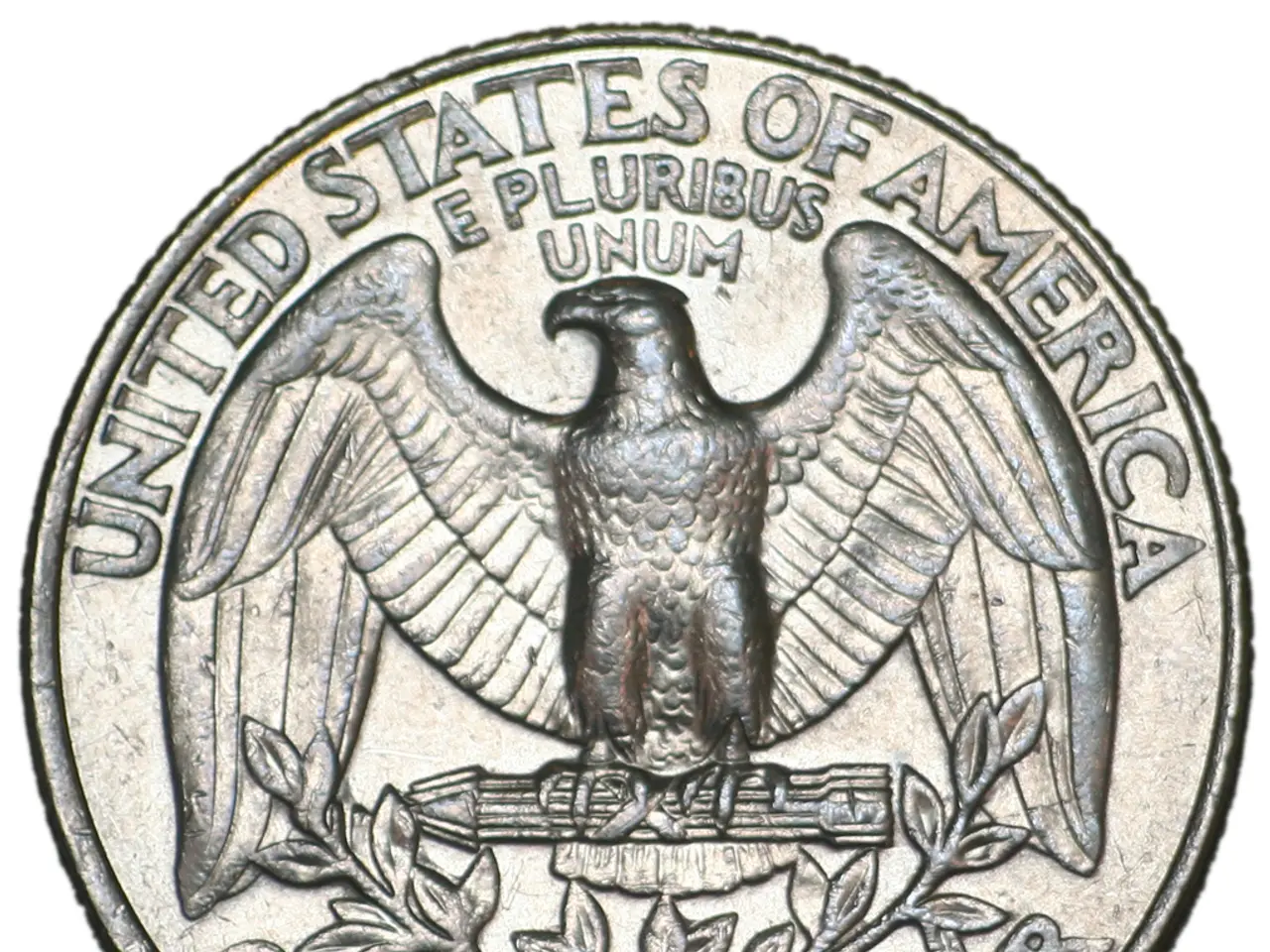Tron generates $1 billion worth of USDT following Nasdaq debut, raising questions about potential profits.
In a strategic move that reflects a growing interest in stablecoins, Tron, the blockchain platform, has minted an unprecedented $1 billion in Tether (USDT), marking its largest stablecoin issuance to date [1][3]. The newly minted USDT remains dormant in a multisignature wallet, hinting at cautious inventory management amid evolving market and regulatory conditions.
This significant minting event follows closely after Tron's Nasdaq listing and a $1 billion hybrid securities filing with the U.S. SEC, suggesting an attempt to integrate stablecoin issuance with traditional financial instruments under increased regulatory scrutiny [1][3]. The surge in USDT issuance on Tron's blockchain has been impressive, with $23 billion minted in 2025 alone—nearly half of the entire $81.7 billion USDT supply on the network. This represents the highest minting rate since the 2021 bull market [1][3].
Tron's network now accounts for about 47.5% of Tether's total supply, surpassing Ethereum in both total supply and transaction volume. Daily stablecoin transfers on Tron consistently exceed $20 billion, underlining growing institutional and retail activity that benefits from stablecoins for cross-border settlements and liquidity [2].
The rise in Tron's native currency, TRX, mirrors this trend. TRX spot prices have risen from below $0.25 in May to over $0.32, supported by increasing Price & Volume across all exchanges [1]. Growing whale activity also suggests institutional interest in TRX [1].
The potential implications of this event are far-reaching. Tron's positioning as a key stablecoin hub could leverage crypto’s integration with regulated financial markets. The coordinated timing of the USDT mint and Tron’s SEC hybrid securities filing suggests an innovative approach to combining stablecoin liquidity with compliant capital-raising methods, which may set a precedent in the cryptocurrency ecosystem [3].
However, this move also invites closer regulatory scrutiny given stablecoins’ systemic importance and the growing global regulatory focus on their transparency, reserves, and issuance practices [4]. The minted USDT does not appear in on-chain supply metrics, indicating that it has not yet entered circulation [1]. Its potential deployment may lead to further capital deployment, but also raises concerns about market liquidity and potential risks.
In conclusion, this event underscores both the strength and potential vulnerabilities of stablecoins in the crypto market. While they play an essential role in liquidity and market stability, they also face increased pressure from regulators demanding transparency and risk controls. Tron's approach illustrates an effort to balance growth and compliance amid these challenges, a reflection of the maturing stablecoin sector’s complex stability and regulatory environment.
[1] CryptoQuant [2] CoinMarketCap [3] Darkfost, crypto analyst [4] Financial Times
- The surge in Tether (USDT) on Tron's blockchain, with $23 billion minted in 2025 alone, shows a growing interest in stablecoins among investors, as evidenced by the largest stablecoin issuance to date by Tron.
- The newly minted USDT remains dormant in a multisignature wallet, suggesting that Tron is managing its inventory cautiously amid evolving market and regulatory conditions, as well as potentially preparing for deployment.
- The growing institutional and retail activity on Tron, along with increasing interest in TRX, suggests that the platform's integration with traditional finance could become more significant in the cryptocurrency ecosystem as a key stablecoin hub.
- The potential deployment of the minted USDT may lead to further capital deployment and liquidity benefits, but the dormant nature of the USDT also raises concerns about market liquidity and potential risks, inviting closer regulatory scrutiny given stablecoins' systemic importance and growing global regulatory focus.




